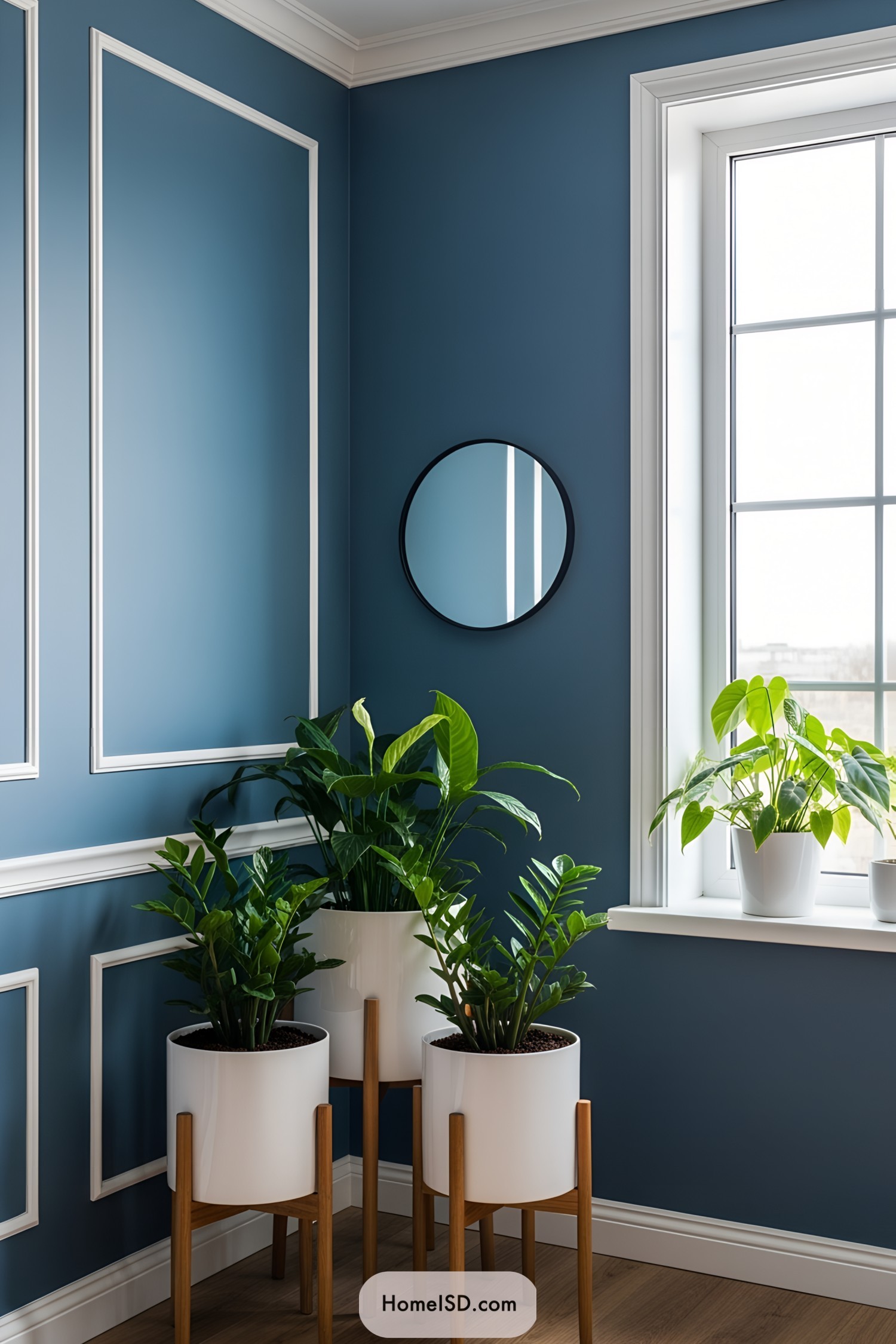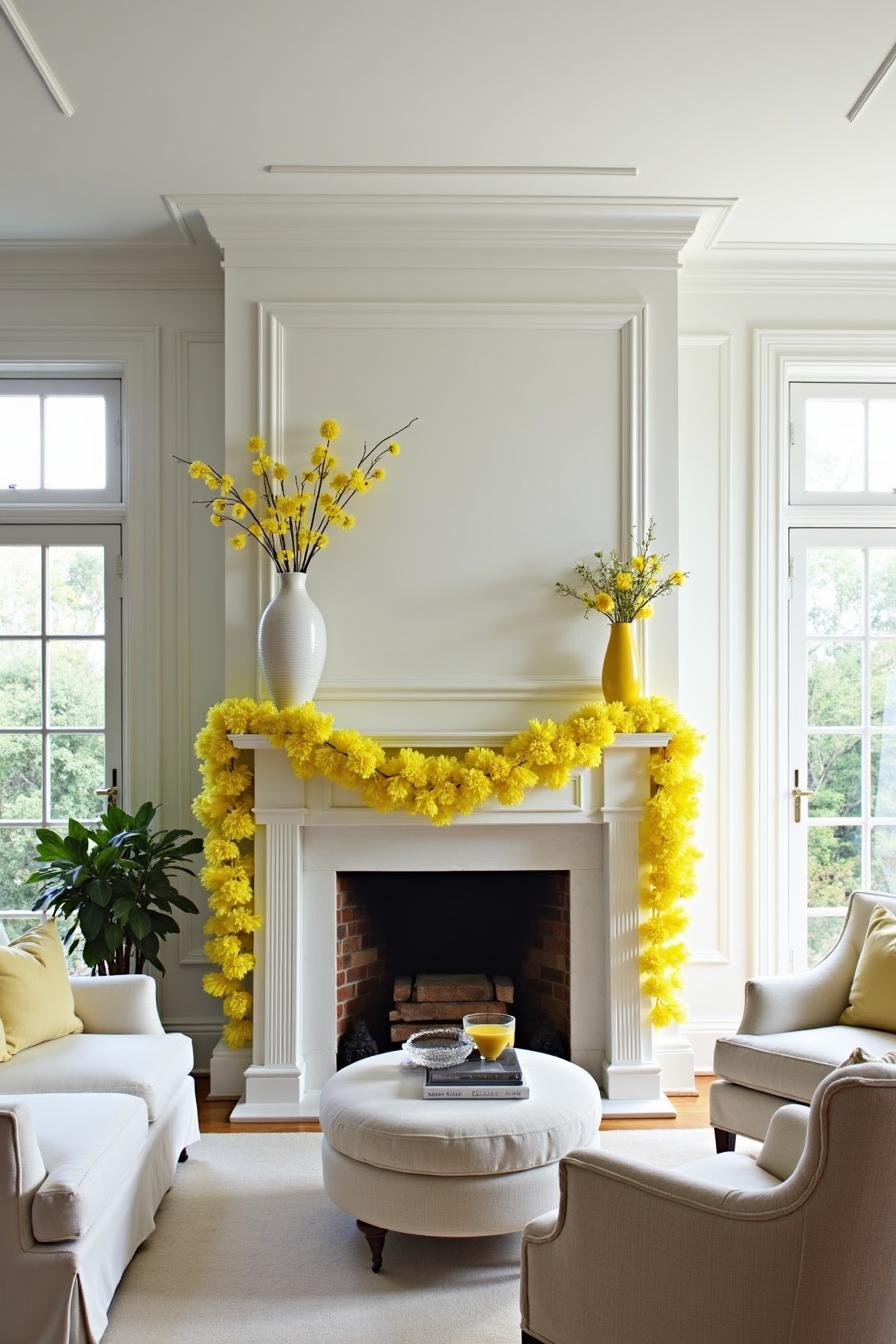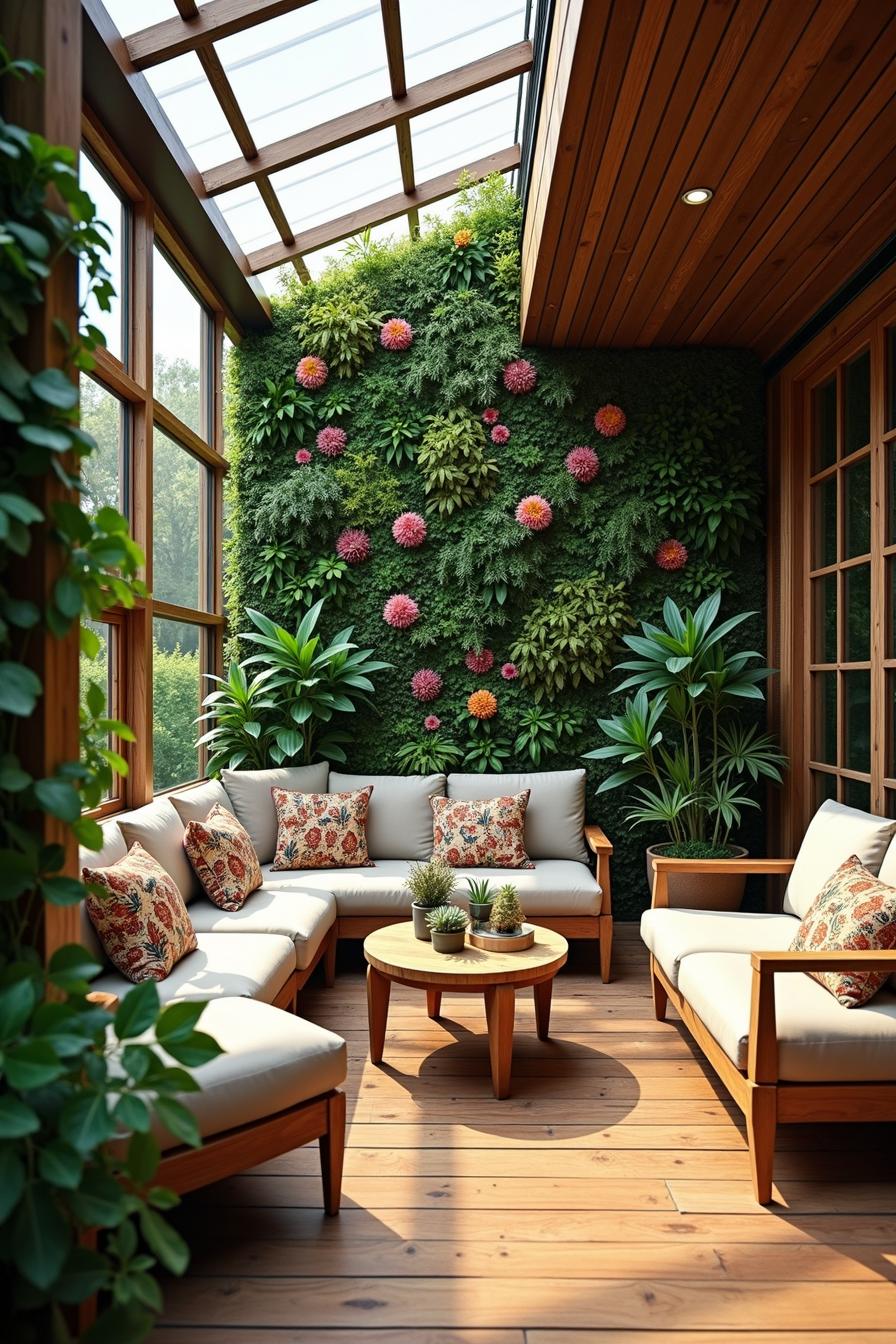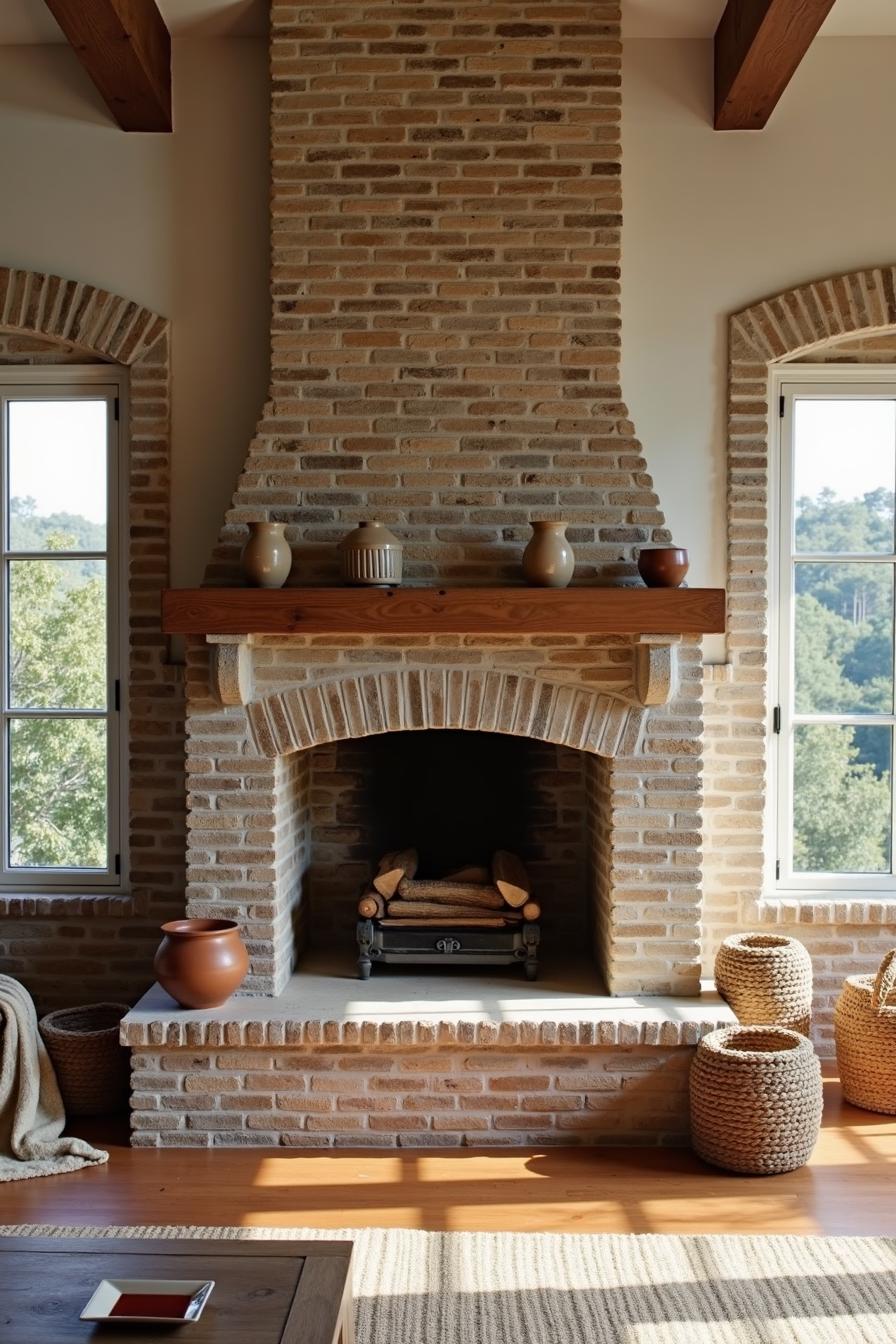Last updated on
Unlock the power of natural illumination with light-efficient design concepts because they can transform any space into a bright, welcoming environment without breaking the bank.
I’m proud to present my unique article on “20 Light Efficient Design Ideas: Maximizing Home Style and Energy Efficiency,” which I’ve personally crafted and illustrated, and I hope you enjoy exploring these designs as much as I relished creating them.
Lighting plays a crucial role in setting the mood and functionality of any space. When done right, it can make a room appear larger, cozier, or even more productive. The good news is, you don’t have to spend a fortune to achieve a well-lit room.
This article will delve into various light-efficient design ideas that not only boost the aesthetic appeal of your home but also save on energy costs. From strategically positioning mirrors to maximize natural light, to choosing the right color palette and installing cost-effective LED lights, you’ll find a range of solutions to suit your style and budget.
So, let’s illuminate your space without lightening your wallet!
Use LED Lighting Fixtures

Switching to LED lights can be a major game changer in energy efficiency and savings. These compact, stylish lights not only last longer, but consume less electricity compared to traditional bulbs. LEDs produce minimal heat, reducing the strain on air conditioning during those hot summer months.
You might appreciate both their versatility and variety. They offer different types of light from soft and warm to crisp and cool, suiting a range of interior styles. LEDs are compact, which allows for creative illumination solutions. Under-cabinet lighting in the kitchen or integrated stair lights provide not only functionality but also a unique ambiance.
As for costs, although you’ll pay more upfront, with longer lifespan and lower energy usage, LEDs definitively pay for themselves over time.
Install Skylights for Natural Light
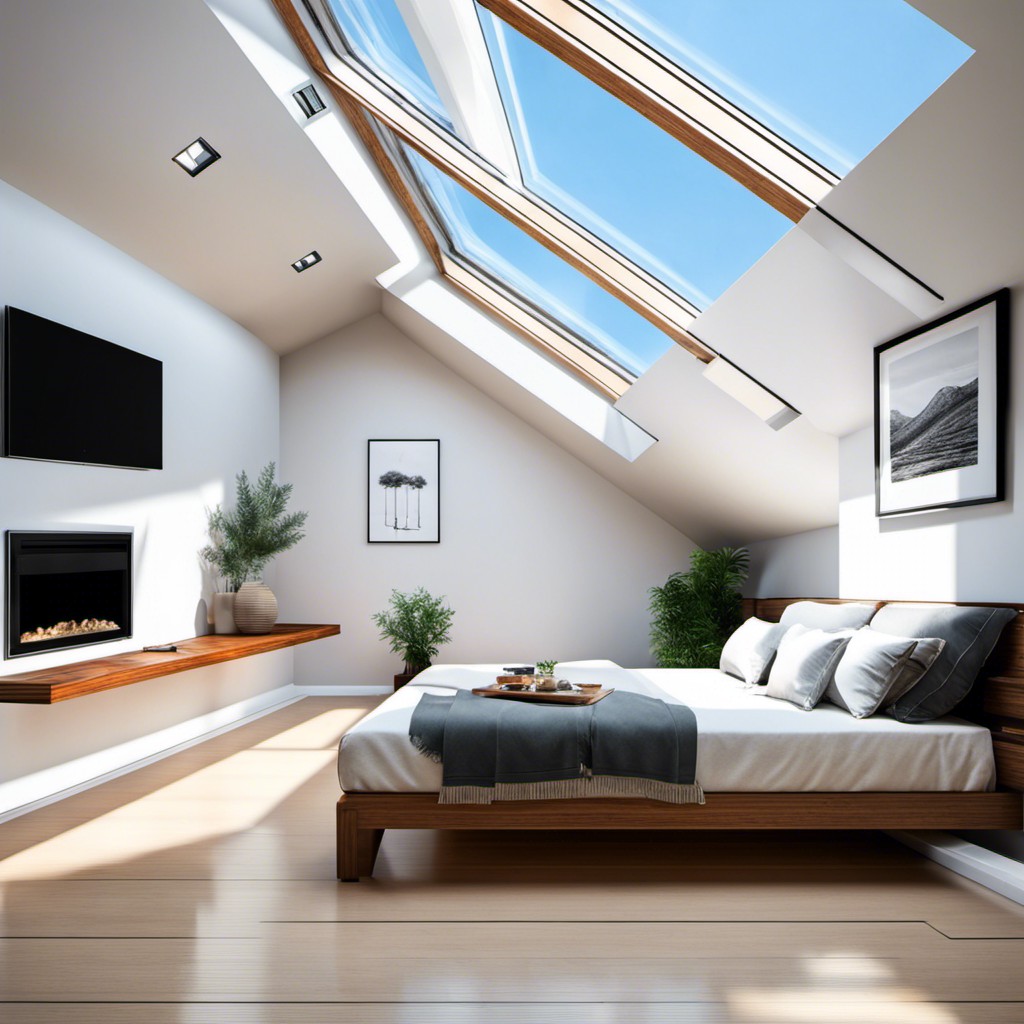
Incorporating skylights into your home design allows for an abundance of natural light to stream in, cutting down on daytime electricity usage. With proper placement, they can illuminate the central living areas of your home for the maximum part of the day.
Here’s a guide to get the most efficiency:
- 1. North-facing skylights offer consistent, but cooler illumination.
- 2. South-facing ones provide the highest light potential, but more heat.
- 3. To avoid overheating in summer, consider skylights with built-in shades or ones that open to let out hot air.
- 4. For cold climates, a low-emissivity, or Low-E, coating can help reduce heat loss in winter.
- 5. Ensure professional installation to avoid water leakage and optimized energy efficiency.
By harnessing the power of the sun, skylights give you free light during the day and add a certain charm to your space. Be creative and strategic to maximize its benefits!
Implement Light-colored Interior Walls
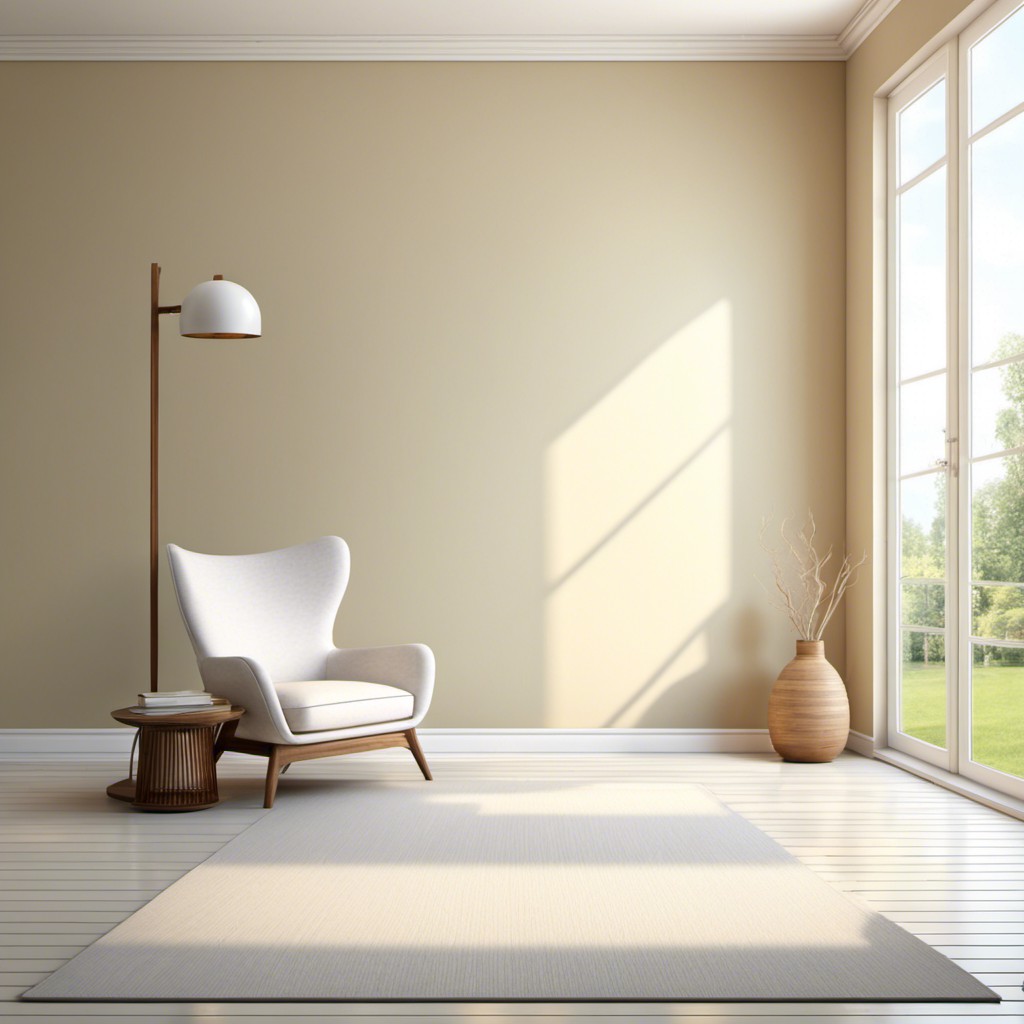
Choosing lighter hues for interior walls can significantly enhance the brightness of a room. Soft pastels and neutrals, like light gray, beige, or off-white, efficiently bounce back sunlight or artificial light, effectively illuminating a space far more than their darker counterparts.
Additionally, this trick creates an illusion of spaciousness, making rooms feel larger and more open, further adding to the aesthetic. This principle, known as color reflectance value, is a crucial consideration when selecting wall paint shades.
Importantly, a high-end look can be achieved without breaking the bank simply by intelligently selecting the right paint colors.
Use Mirrors to Reflect Light
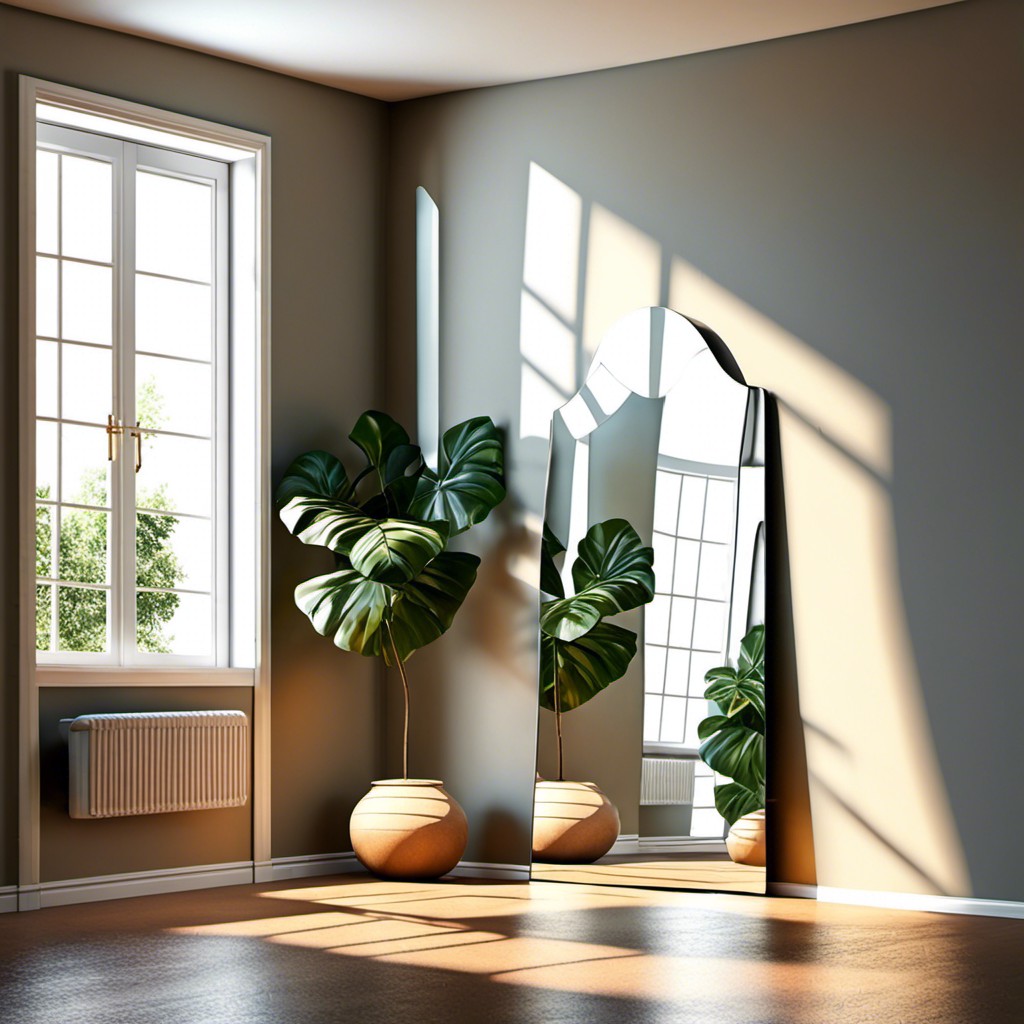
Capitalizing on mirrors can greatly enhance the brightness in your space. Mirrors in strategic locations can work like magic, bouncing light around the room. For maximum luminosity, place a mirror on the wall opposite a window. This allows the mirror to reflect the natural light streaming in, illuminating even the farthest corners of the room.
You can also use mirrored furniture, such as a chest of drawers or a coffee table, to reflect light. Not only does this trick increase the amount of light in the room, it also adds a touch of elegance and spaciousness.
Another sneaky but effective method is the use of mirrored backsplashes in the kitchen or bathroom. With their high reflectivity, these backsplashes lighten up the area, making it appear larger and brighter.
Remember, the bigger the mirror, the more light it can reflect. However, style and aesthetics also matter. So, choose mirror shapes, sizes, and designs that complement your interior décor.
Install Dimmer Switches
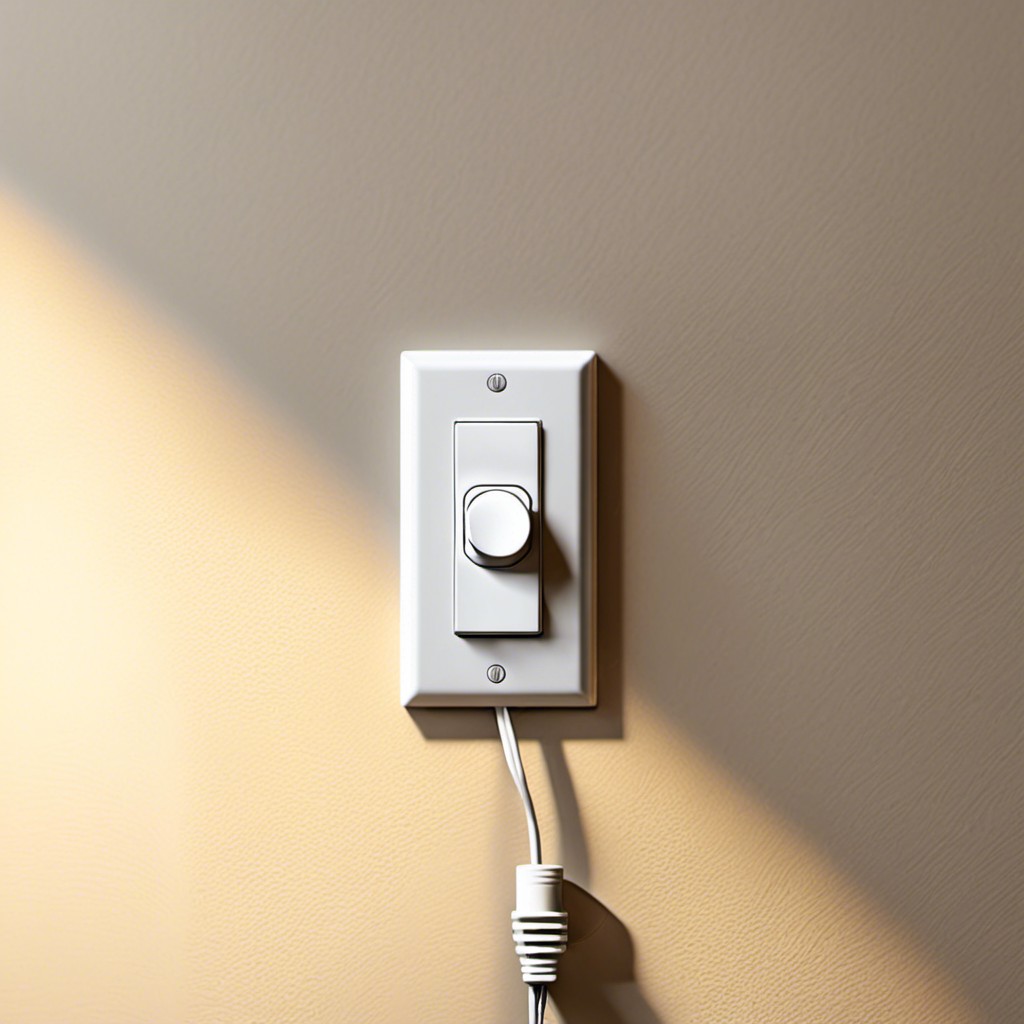
Dimmer switches offer unprecedented control over the brightness of your fixtures, allowing you to create an ambiance that suits the mood, time of day, or specific function of a room.
Not only do they contribute to aesthetics, but they also allow significant energy savings.
By reducing the light intensity, they consume less electricity, leading to energy efficiency and cost-effectiveness.
Remember, the installation of dimmer switches should be done by a professional and suitable for the type of bulb you are using.
Most importantly, not all LED bulbs are dimmable, so select your bulbs carefully.
Apply Solar Tube Technology
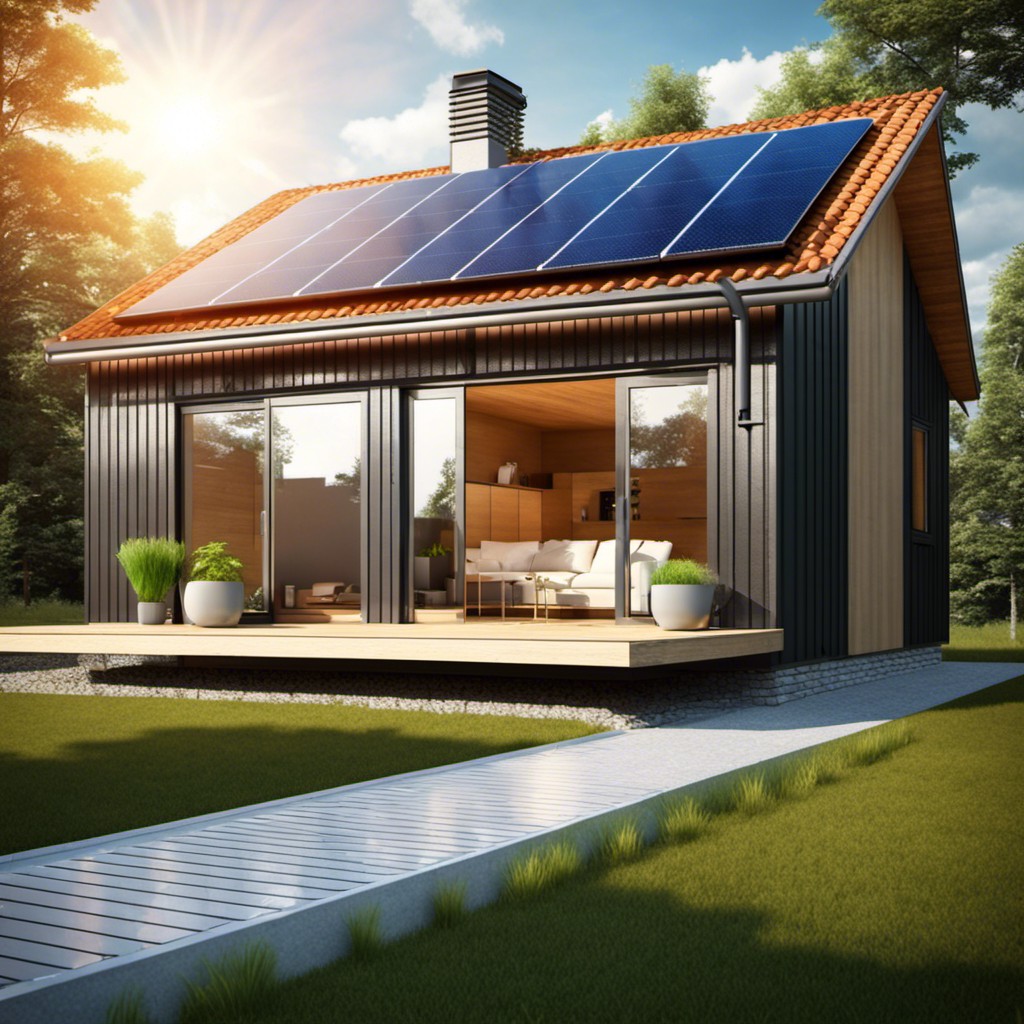
Solar tubes, also known as sun tunnels, brilliantly combine the benefits of natural light with the convenience of traditional ceilings. These discreet systems work through tunnels that capture sunlight from your rooftop, redirecting it to desired indoor areas.
Solar tubes are ideal for rooms that lack windows or spaces where additional privacy is needed.
Advanced models even come with integrated LED lights, providing a seamless transition between day and night illumination. They are budget-friendly, with installation costs significantly lower than skylights.
Not only do they minimize energy use, but solar tubes also reduce your reliance on artificial light, leading to substantial cost savings over time.
What’s more, solar tubes also contribute to a healthier living environment. Natural light can have a positive impact on your mood and productivity, plus it doesn’t emit any harmful UV rays like fluorescent bulbs.
More than just a daylighting solution, solar tubes reflect a deep respect for the environment and a strong commitment towards resource efficiency.
Use Daylight Sensors
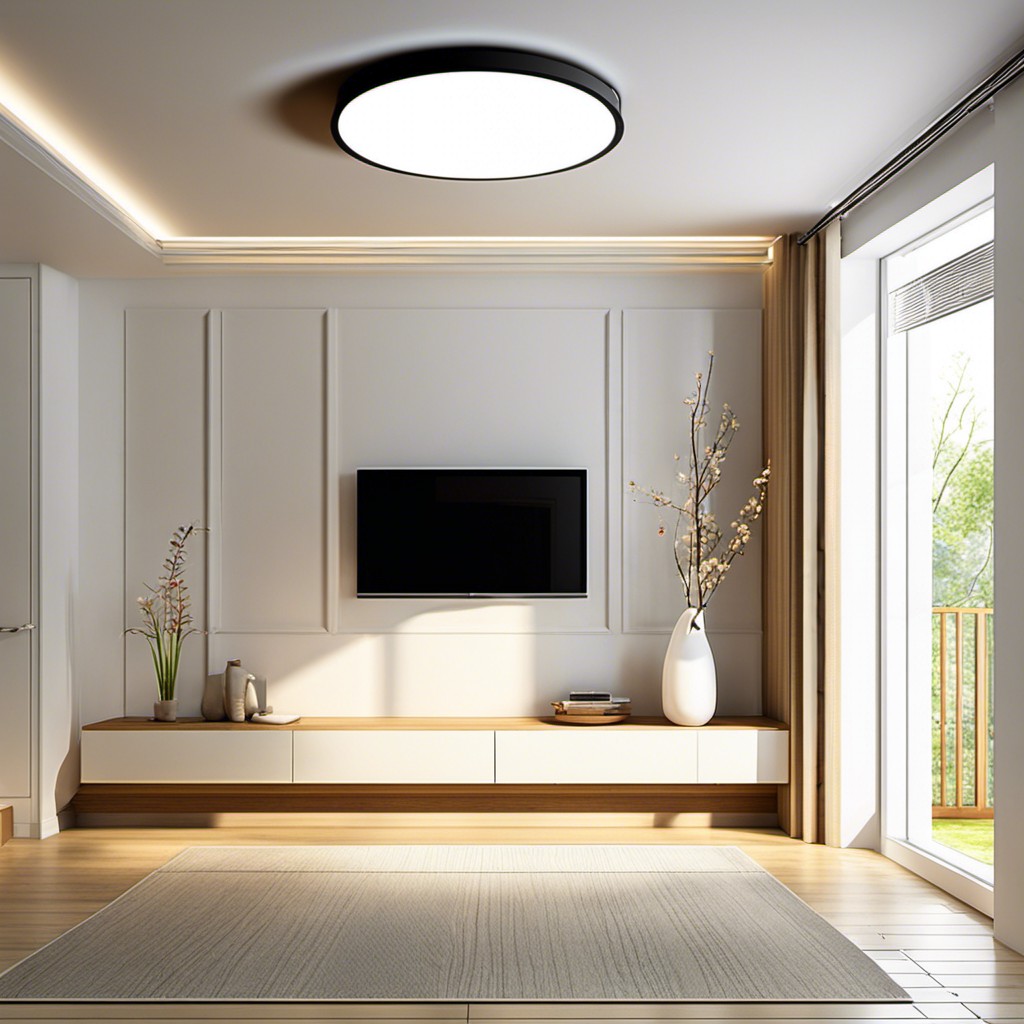
Harnessing sensors can be the game-changer in bolstering the efficiency of your home lighting. They work simply by adjusting the level of artificial light based on the intensity of natural light available during the day.
For instance, on a bright sunny day, these nifty devices automatically reduce the light output, hence conserving energy. Conversely, cloud cover or evening hours trigger an increase in light output, ensuring a consistent level of illumination throughout the day.
It’s a bright idea to incorporate these sensors in rooms with plenty of windows or sun-facing areas of the house. They are easy to install and programmable, making them a practical choice for being eco-friendly while saving on your electricity bills.
Apply Translucent Wall Panels
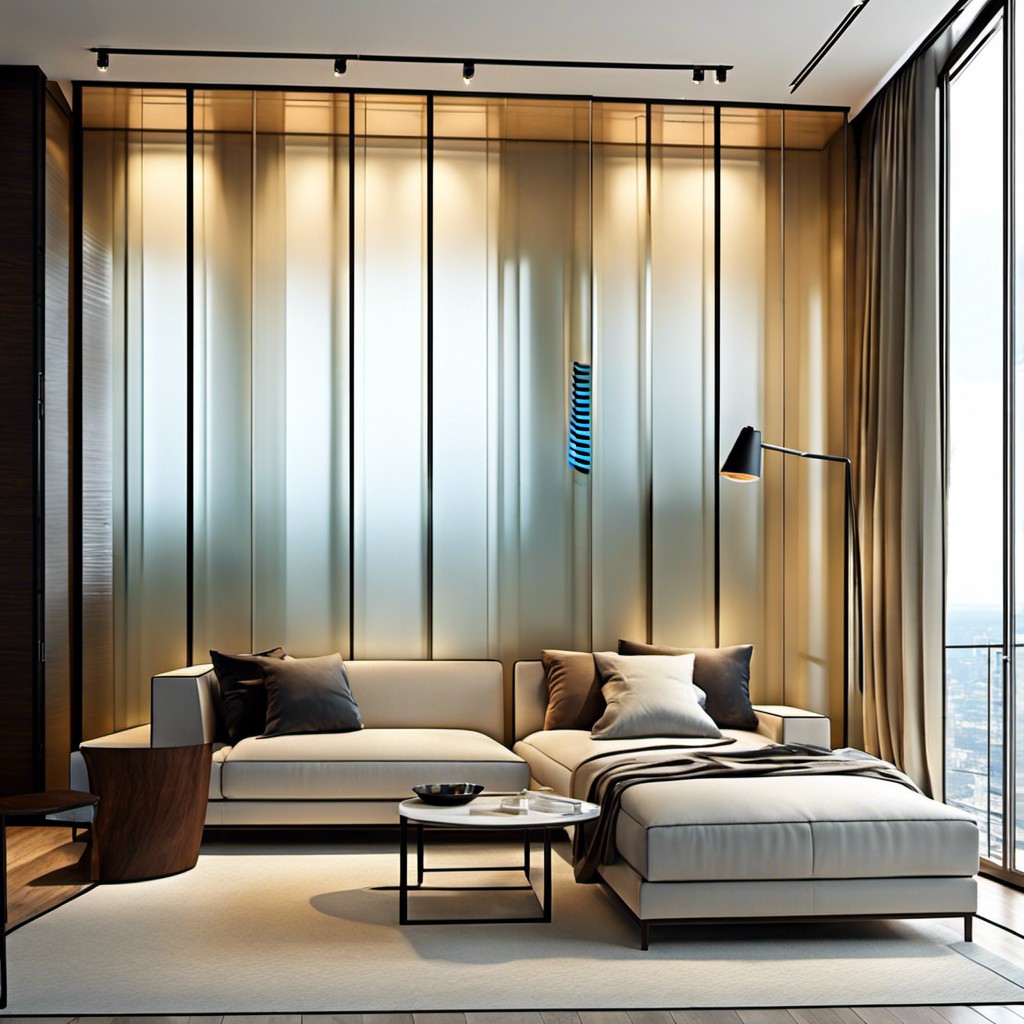
Translucent wall panels offer an efficient and aesthetically pleasing way to use daylight for interior illumination, reducing reliance on artificial light sources. Made from materials such as frosted glass, polymer, or certain types of treated natural stone, these panels allow a controlled amount of sunlight to permeate through, delivering a soft glow to indoor spaces.
They can be strategically placed in areas of your home where you want to increase light without compromising privacy, including bathrooms, hallways, and partitions between rooms. The degree of translucency can be customized, giving you control over how much light gets diffused into space. Remember, the light intensity will always be dependent on exterior conditions, so keep in mind where the shadows fall when choosing your panels.
Sourcing and installing these can be cost-effective, especially when you consider long-term energy savings. Local hardware stores often sell them, and with a bit of DIY spirit, the installation can turn into a fun and rewarding project. The end result? An energy-efficient home that basks in a natural glow.
Design With Open Floor Plans

Creating spaciousness through open floor plans not only adds dimensional depth to your home but aids in optimal light circulation. Transcending walls helps light to traverse well, illuminating every corner effortlessly.
1. Allow natural light saturation: With fewer walls to block, daylight can reach further into the house.
2. Eliminate unfriendly shadows: Lack of barriers prevents the formation of unwanted, persistent shadows generally associated with smaller, closed off rooms.
3. Accommodate more light sources: Open spaces give the flexibility to add more light fixtures without overwhelming the room.
4. Liberates light movement: Light travels freely, creating a vibrant, dynamic interior space.
Be it the glow from the chandelier in the dining area pouring into the living room, or morning sunlight streaming across the house, an open floor plan helps beautifully unify light sources.
Install Energy Star-rated Lighting
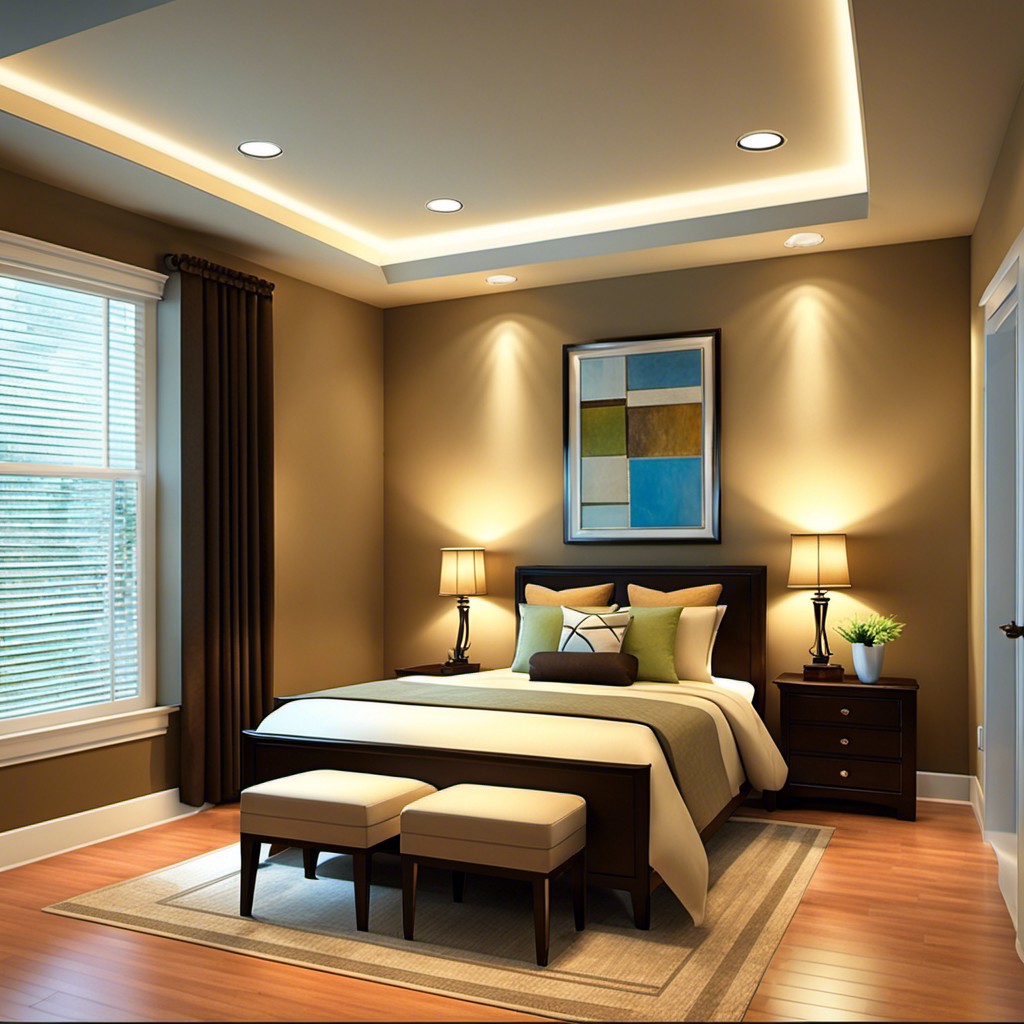
Achieving light efficiency doesn’t mean sacrificing brightness or quality of illumination. Energy Star-rated lighting products provide a high quality of light and are quite energy-efficient. They consume up to 75% less energy than traditional, incandescent lighting options, often a top choice for both residential and commercial settings.
Primarily, there are two types: Energy Star rated LED lights, and Compact Fluorescent Lamps (CFLs). Both offer long-lasting use, far beyond their traditional counterparts.
LEDs, in particular, excel at directionally emitting light, making them perfect for task lighting and focus areas. CFLs, though not as energy-efficient as LEDs, still consume about 70% less energy than regular bulbs.
Correct disposal of CFLs is essential due to their trace mercury content, while LEDs are completely safe and recyclable. When swapping lights, be sure to look for the Energy Star rating for beneficial energy efficiency and a lesser ecological footprint.
Use Motion Sensor Lighting Systems
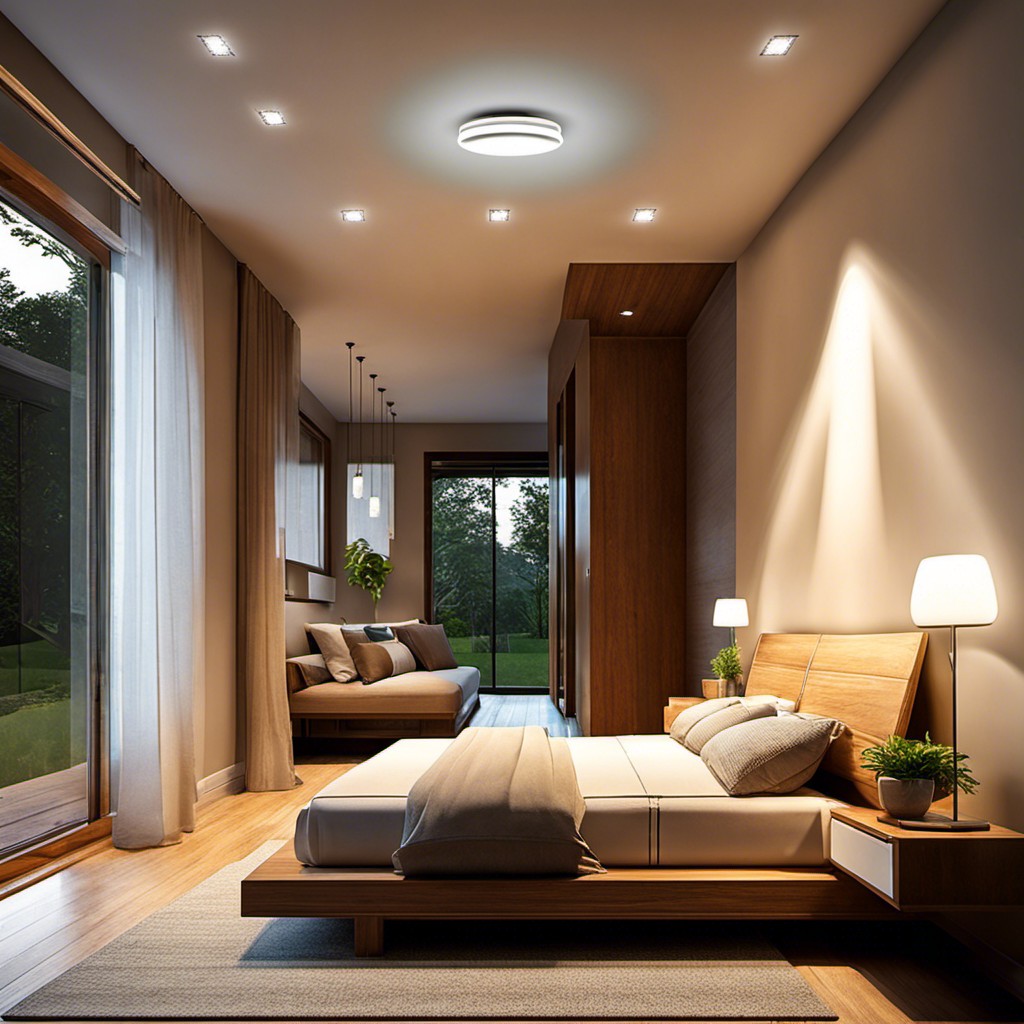
Motion sensor lights offer a two-fold advantage: effective illumination and energy conservation. Their intuitive design activates upon sensing movement within a certain radius, providing light exactly when you need it.
1. Efficiency: These lights only work when they detect movement, ensuring no wastage of electrical energy.
2. Safety and security: Particularly useful for entry points, they can enhance home security during darker hours.
3. Convenience: Imagine you’re carrying groceries into a dark home; motion sensor lights immediately light your path. No more fumbling for switches!
4. Versatility: Available in various styles and designs, they can blend seamlessly with your decor.
Remember, positioning is crucial for optimum sensitivity and utility. Explore the market to find options that match your household needs and style preference.
Position Lampshades Optimally
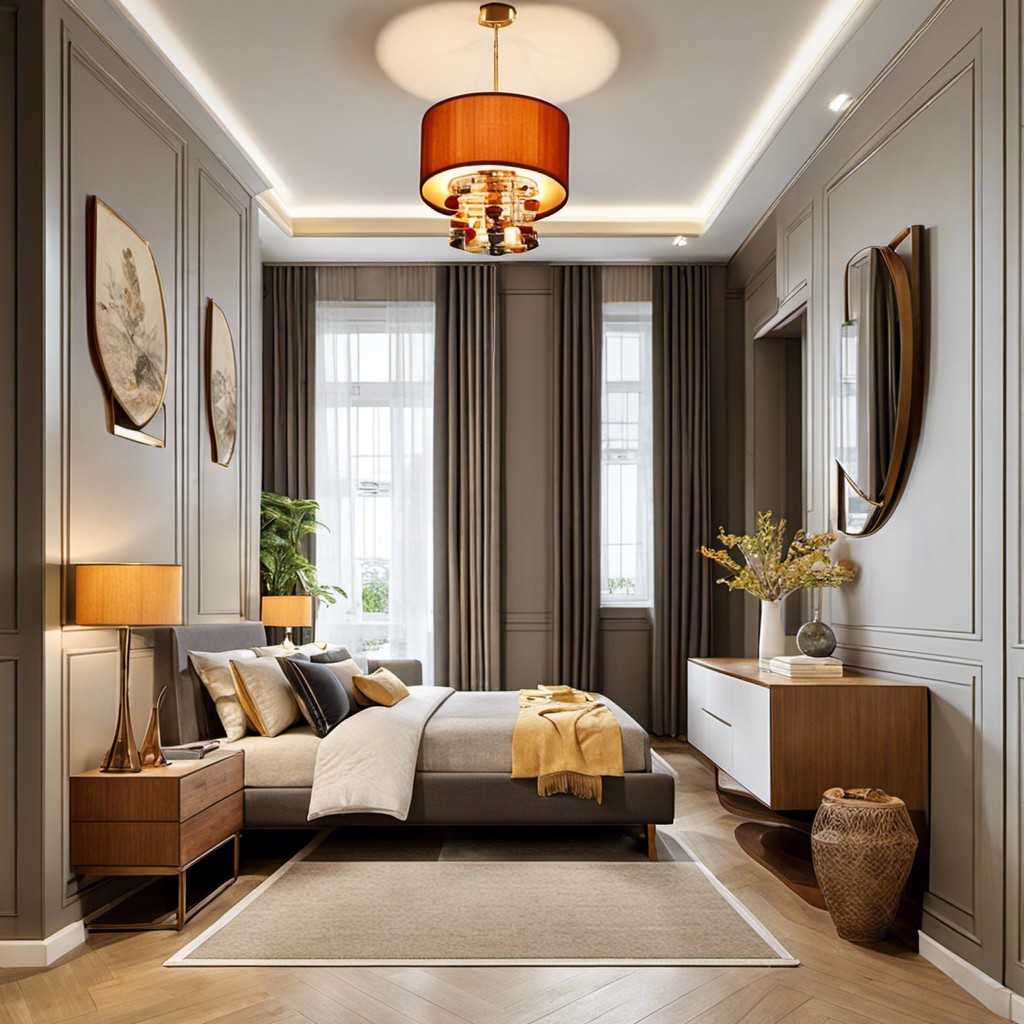
Choosing the right spot for your lampshades can elevate your lighting efficiency to new heights. Pay attention to corners and areas that cast shadows – stationing a lampshade here can help disperse light evenly.
Placing them next to reflective surfaces or under windows also enhances their light output significantly. Remember to balance it out; having too many sources in one spot can cause an overpowering effect.
Every room needs its fair share of illumination. For desks and reading areas, position your lampshade on the side contrary to your writing hand to avoid casting shadows on your work. It’s all about strategic placement when aiming for optimal light distribution.
Install Clerestory Windows
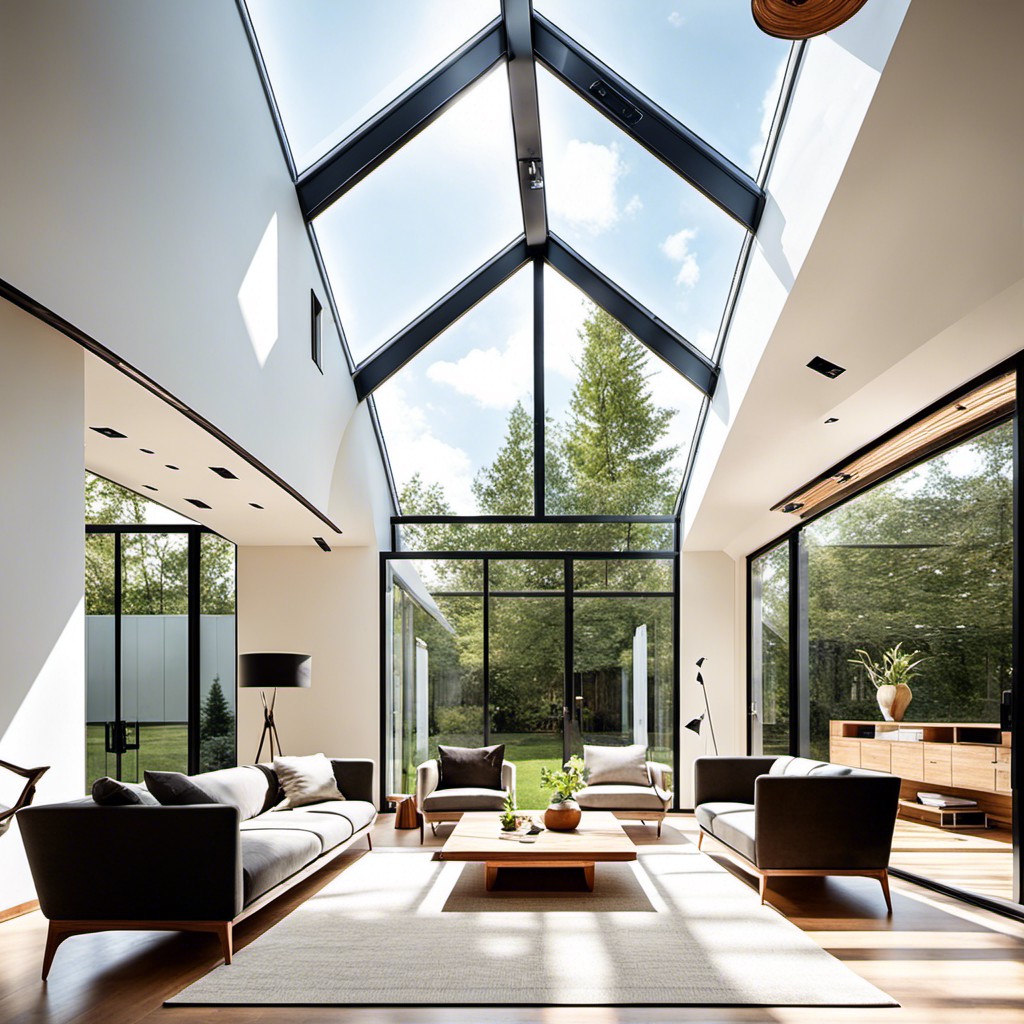
Just like adding a taller bookshelf to hold more books, clerestory windows serve a similar function – loosening the constraints upwards to allow more light. While regular windows get obstructed with furniture or other architectural elements, these windows situated high up on the walls dodge common light-blockers.
The benefits are numerous. Beyond adding a visual element of height to a room, they are terrific for preserving privacy while flooding interiors with natural light. It’s especially beneficial in crowded areas where traditional windows might overlook neighboring properties.
Another perk is their effectiveness in promoting heat ventilation. Hot air rises naturally, and clerestory windows provide an exit, thereby inviting in a breeze to make the home more comfortable.
The take-home point? Clerestory windows are brilliant for maximizing brightness and optimizing thermal comfort without sacrificing privacy. Remember, they serve a dual purpose, enhancing your design aesthetic while promoting an energy-efficient environment.
Use Light Colored Curtains/blinds

In any living space, the choice of window coverings can impact light levels significantly. Opting for light-colored curtains or blinds transforms natural light entering the room into a soft, diffused glow. Need a private space without losing ambient light? Try using semi-translucent blinds.
Knowing when to use your window coverings optimizes light usage. Keep them open during daytime, and you’ve got free, natural lighting. Additionally, materials make a difference. Choose linens, cotton or sheers that allow sunlight to filter while maintaining privacy.
Remember that not all window areas are the same, north or south-facing windows tend to benefit more from lighter curtains. Try diffusing harsh sunlight from east or west-facing windows by using slightly denser materials.
By using these smart and budget-friendly strategies, you’re efficiently controlling your living space light levels while cutting down on artificial light use.
Apply Layering of Lights
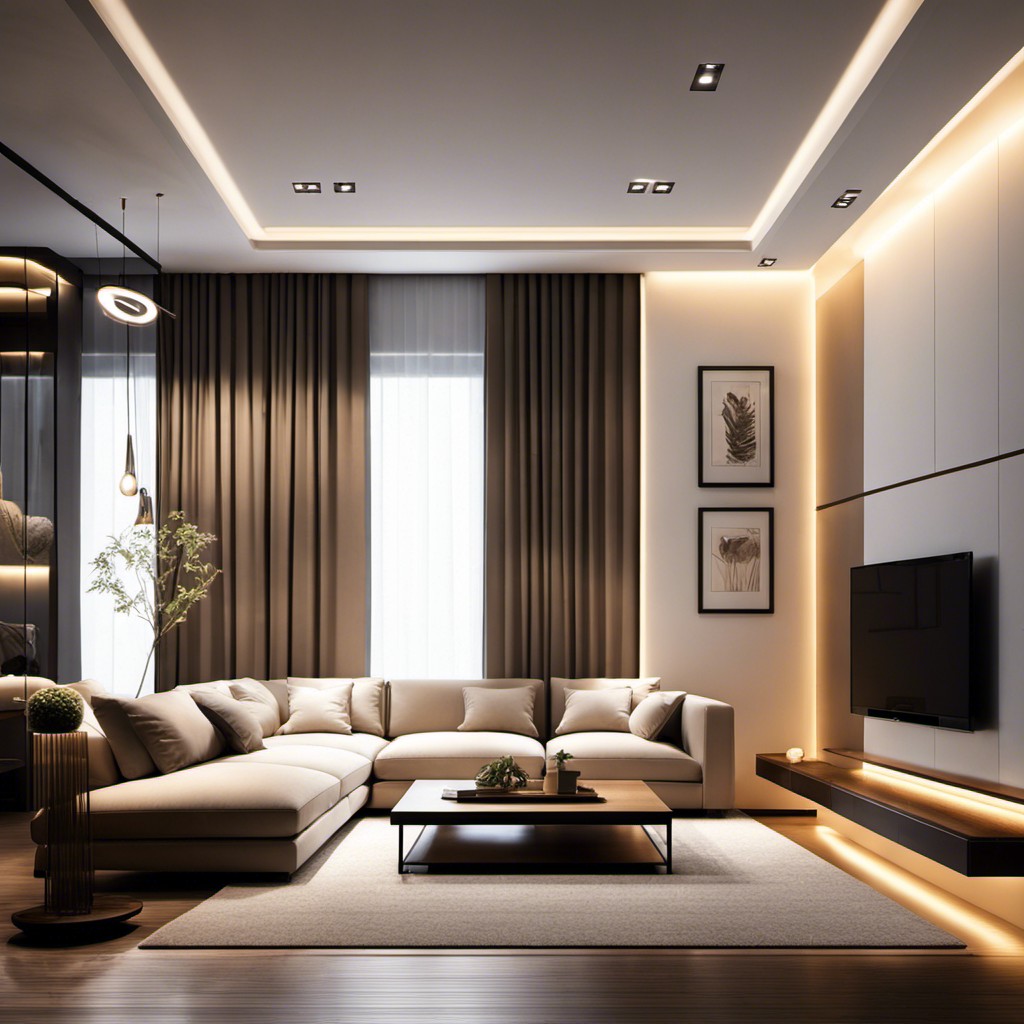
Layering lights is a smart design approach that involves utilizing different types of lighting to achieve balance and enhance the mood. To make it work, consider these three layers: ambient, task, and accent lighting.
1. Ambient Lighting: Often referred to as general lighting, it provides overall illumination for the entire room. Recessed or track lighting can serve this purpose effectively.
2. Task Lighting: Specifically aimed at assisting with activities such as reading or cooking. Floor and desk lamps, as well as pendant and under-cabinet lights, deliver this type of lighting.
3. Accent Lighting: Mainly decorative, it highlights certain features of a room, such as artwork or architectural details. Wall sconces and landscape lights are typical for this layer.
Remember, it’s all about balance. Shift between layers based on time, occasion, and necessity for a light efficient space.
Install Light Shelves
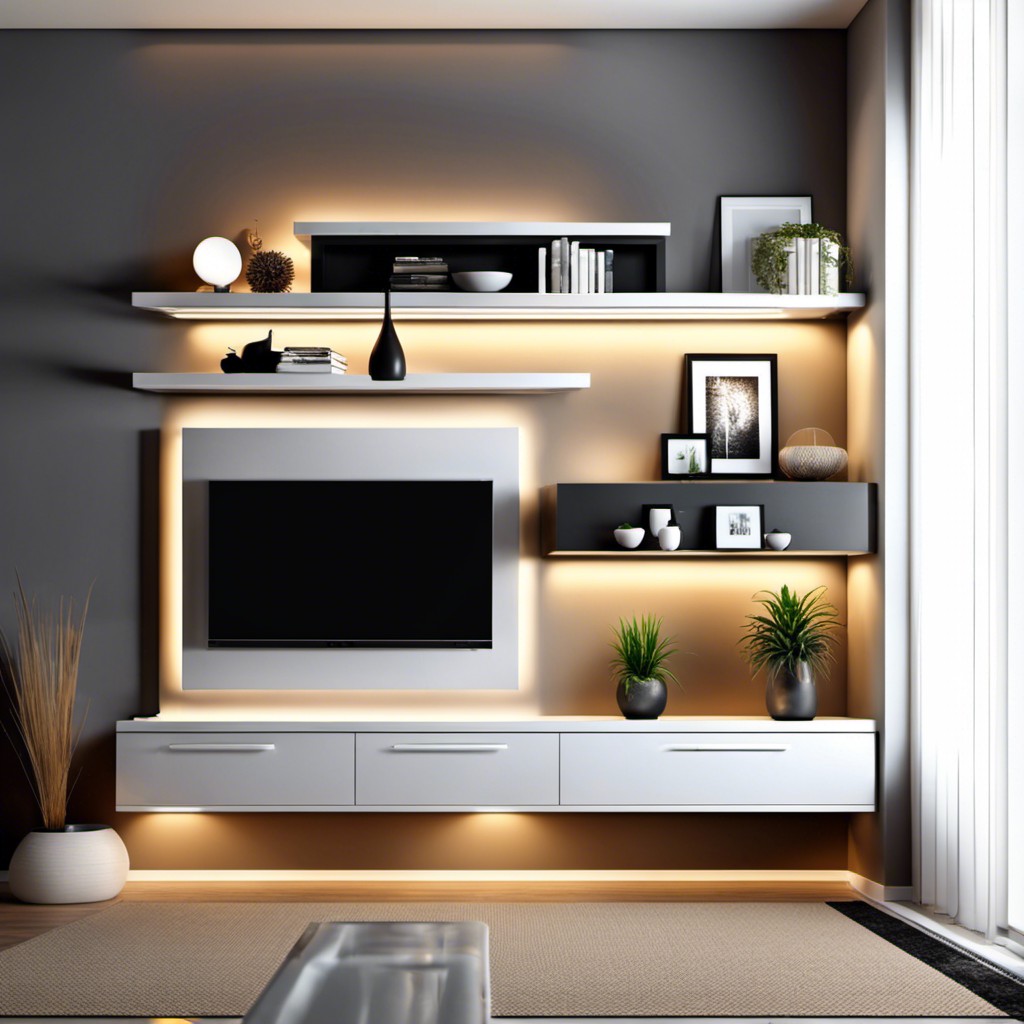
Light shelves can be an influential component of your home’s aesthetic as well as its energy efficiency. These structural elements, placed above eye level, reflect natural light deep into the room, reducing dependence on artificial lighting during the day.
When contemplating a light shelf installation, there are a few key factors to consider:
- Correct Positioning: Aligning the light shelf with the sun’s trajectory is crucial to maximize the light dispersion within the room.
- Material Selection: Shelves made of materials with high reflectivity will distribute light evenly and effectively.
- Regular Maintenance: Ensuring the shelf’s surface is clean will increase its efficiency, as dust or grime can hamper light reflection.
By thoughtfully integrating light shelves into your home, you can achieve a noticeably brighter and more energy-efficient environment.
Use Glass Doors for Light Flow
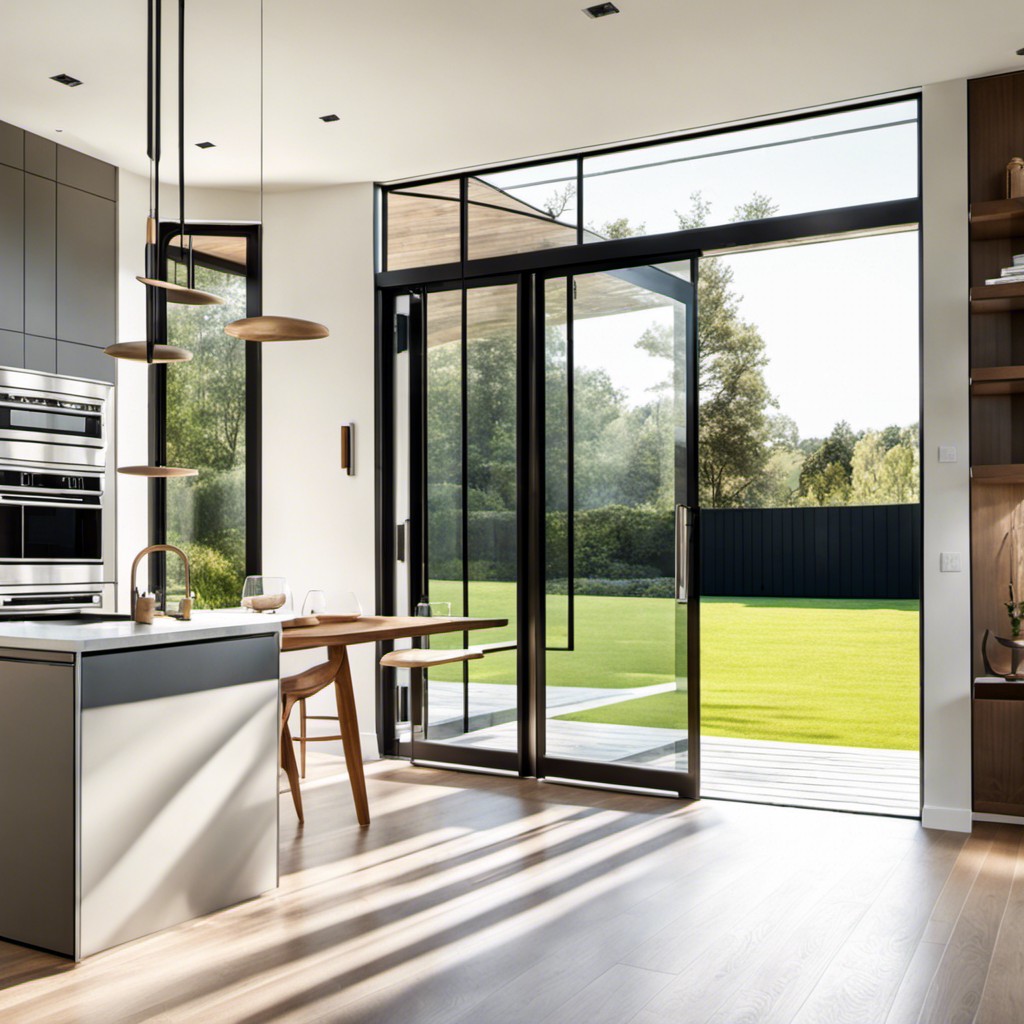
Choosing the right placement of glass doors can bring in a refreshing wave of daylight, significantly cutting down on electricity costs during the day.
To optimize natural light passage, install glass doors in rooms facing the sun direction.
A glass front door or internal glass doors, for example, can channel light from one room to another, so less lit areas benefit from the natural light too.
Frosted glass can be an ideal choice for maintaining privacy without compromising the light flow.
Moreover, consider glass doors with energy-efficient glazing to prevent heat loss in winter and excessive heat in summer.
Use Paint With a Satin Finish
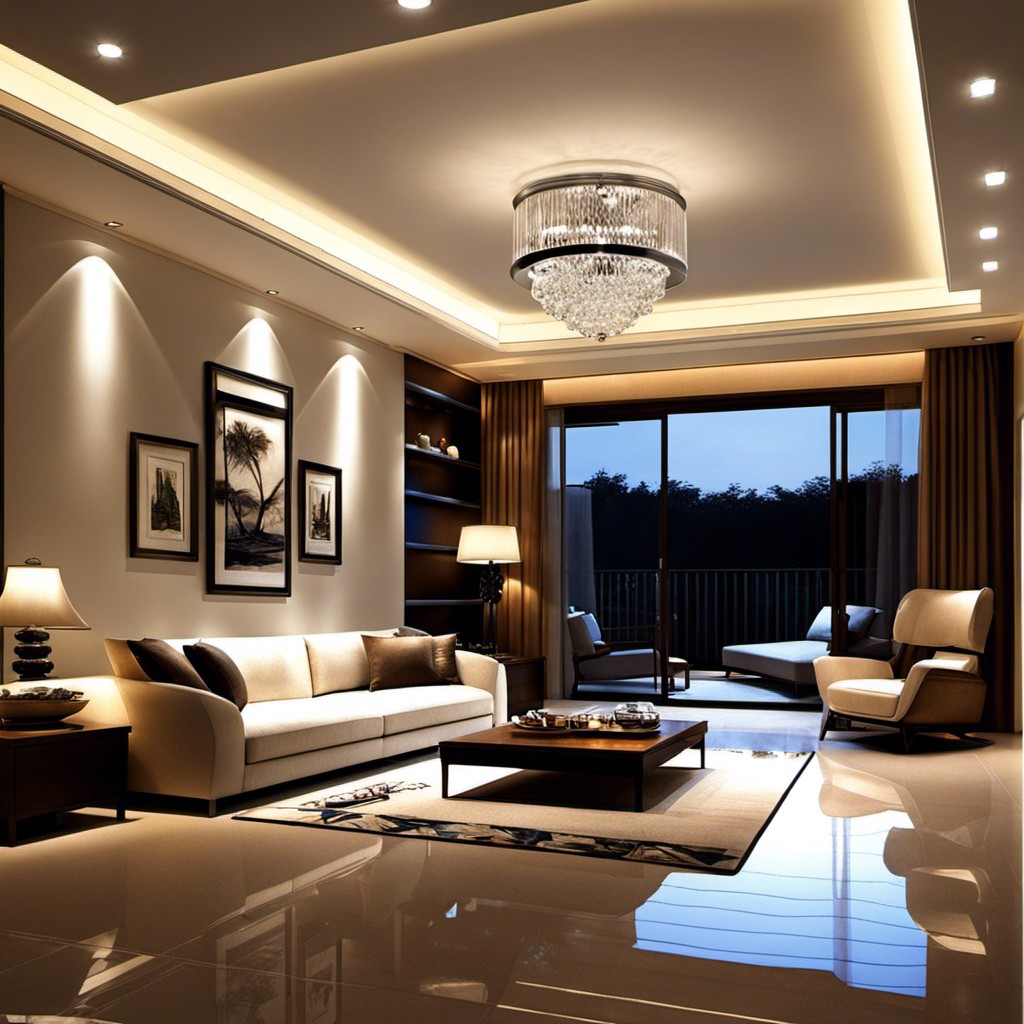
Satin finish paint can work wonders as it softly reflects light, giving rooms a gentle glow and making them seem more spacious. Consider it your ace in the hole for smaller spaces.
Part of its charm lies in its durability, standing up well to cleaning and rubbing without losing its sheen. It’s best suited for hallways, children’s rooms, and areas receiving moderate to high traffic.
Experimenting with color can vastly change a room’s ambiance. Light hues such as soft whites, creams, or pastels increase light reflection, brightening up your space. However, take care with such choices. Opt for warm tones to avoid creating a stark, clinical environment.
Remember, when it comes to going DIY with satin finish paint, prepping is key. Smooth out any imperfections on the wall before beginning. This paint type is less forgiving, but the results, unquestionably, are worth the effort.
Implement Strategic Landscaping
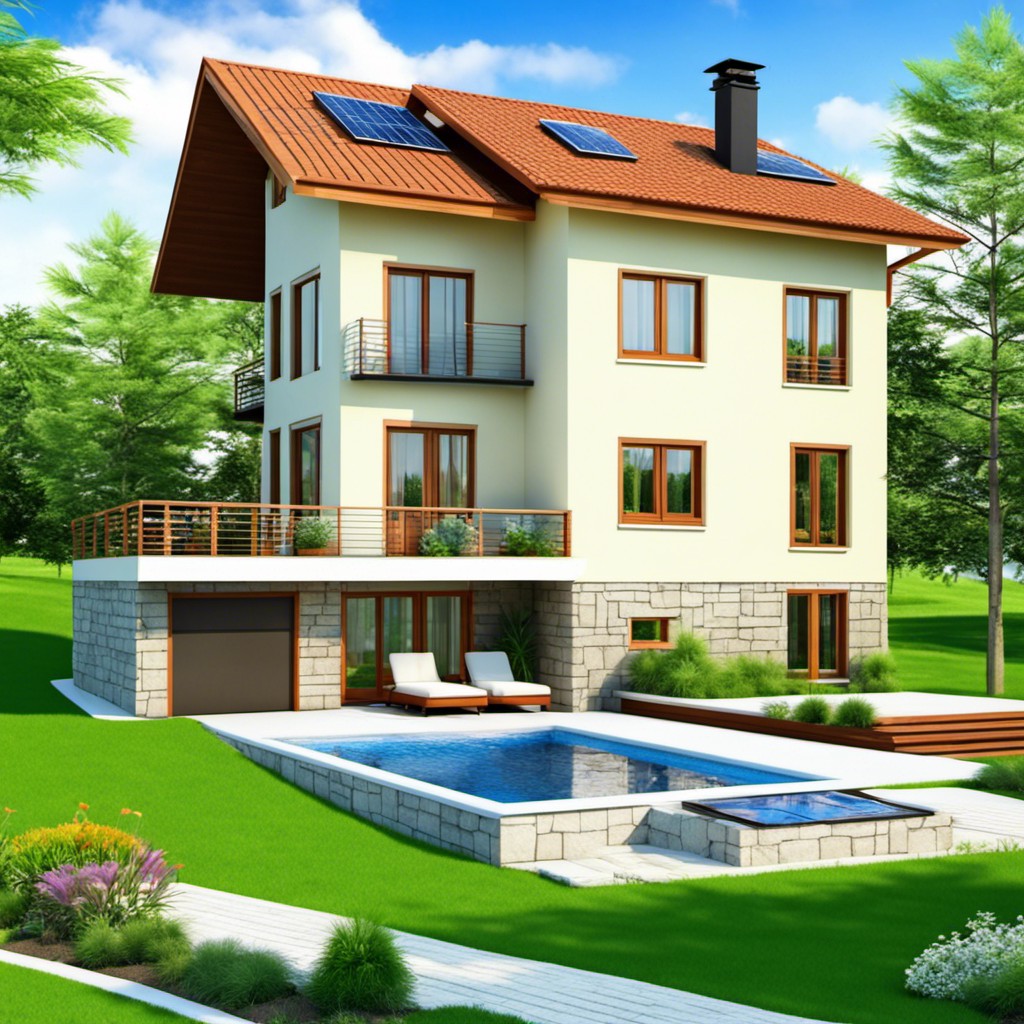
Outdoor elements have an indirect yet significant impact on indoor lighting. Thoughtfully positioned trees, shrubberies, or trellises can do wonders. Plant leafy trees near windows which are excessively lit, they will provide shade and cool down your home during summers, yet in winters, when they shed leaves, they let in warmth. On the other hand, evergreens play a great role in blocking winter winds.
Reflective surfaces within your landscape, like light-color gravels or white fences, increase ambient light entering your rooms. A water feature in direct sunlight can also create a sparkling light effect. Remember, strategic landscaping not only caters to efficient lighting but also enhances your home’s curb appeal. This budget-friendly technique could be an aesthetic way to illuminate your interiors.
Install Light Control Applications On Devices
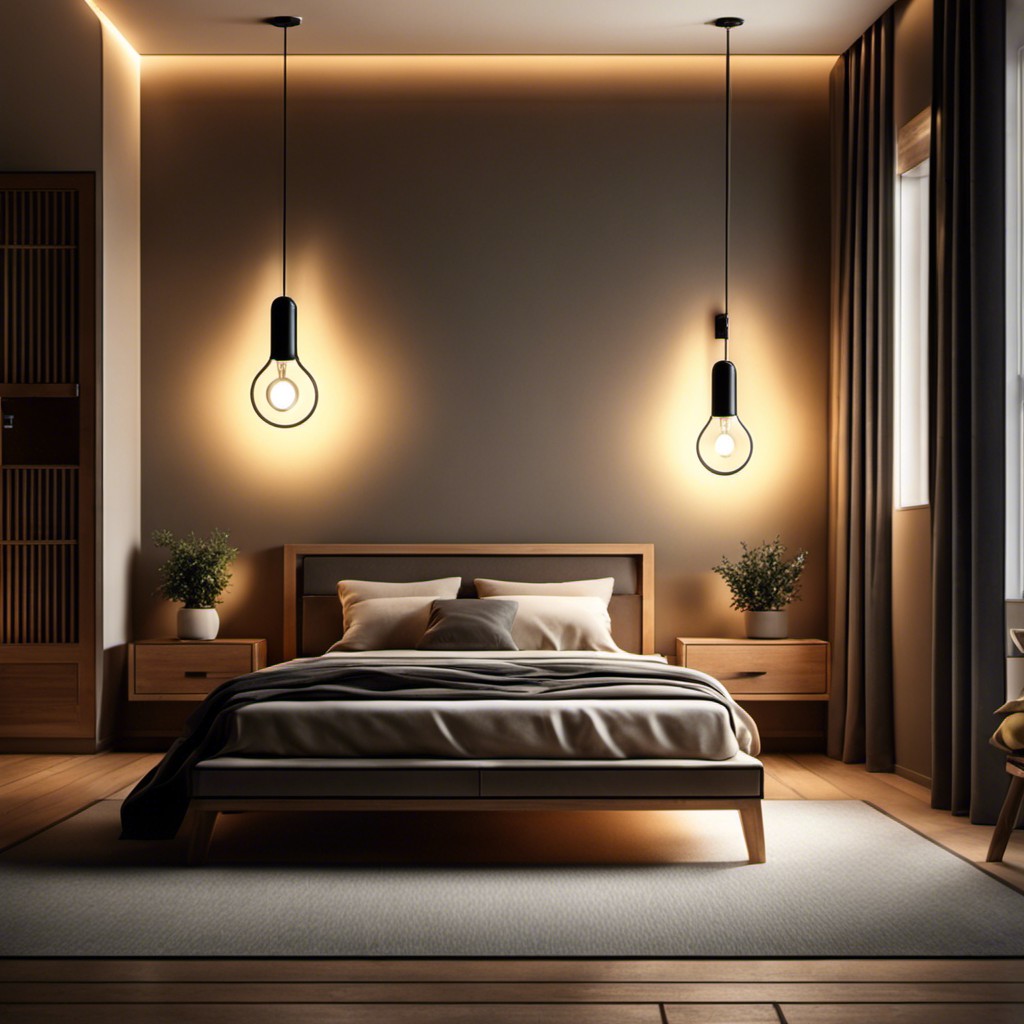
Shining in the realm of smart technology, light control applications enable you to adjust lighting in your home from your smartphone or tablet. They provide functionality of dimming the lights, changing the light color, or even setting up lighting schedules.
1. Dimming Controls: Adjust the brightness of lights based on your individual preference or time of day. Goodbye to the excessively bright lights in the evening!
2. Color Changing Controls: Mood-based lighting is a click away. Indulge in a relaxing blue hue for your evening wind-down routine or opt for bright white for a focus-boosting work session.
3. Lighting Schedules: Programming your lights based on your daily activities can help conserve energy. You could set the lights to turn on just before you wake up, and automatically dim when it’s bedtime.
Remember, installing these applications is straightforward for most modern light systems, often just requiring a simple download and pairing process.
Recap

